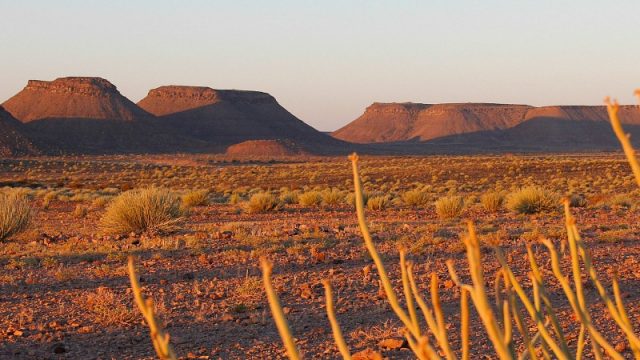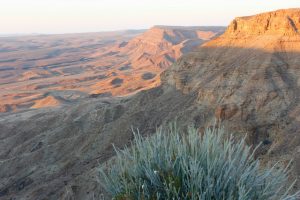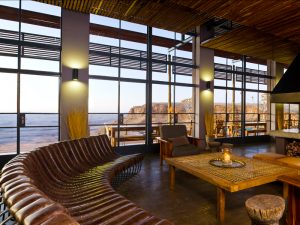Over 160km long, up to 27km wide and 550m deep, Fish River Canyon in southern Namibia is breathtaking in its size and beauty. It is the second most visited site in this dry country in the southwestern part of Africa, and probably the second largest canyon in the world, after the Grand Canyon in the United States.
While this area’s dreamlike mountains and huge landscapes enchant geologists and photographers, it is also popular with hikers, who take on the 88km trail running along the ravine. Even when you are not hiking, the enormity of the site will humble and astound you.
Early morning and afternoon light play on the fissures and gulleys of this huge chasm and if your timing is good, you might be the only one at a viewpoint, with the dry light breeze the only sound you will hear.
The canyon is hellish during summer (November to February) when temperatures can soar to over 45°C (113°F) and the river may flood. It is also closed for hiking then. Conditions are more comfortable from May to mid-September, when hiking permits are issued. Even in winter, this arid region is moderate with average daytime temperatures of around 21°C. If you do not have time for the five-day hike, shorter hikes are possible and are usually guided outings organized by lodges in the area.
For non-hikers, the canyon region holds many splendors. The surreal rock formations, wildlife and desolate landscapes of this area can be explored on game drives and sunset drives.
The |Ai-|Ais/Richtersveld Transfrontier Park and privately managed Gondwana Canyon Park create a vast expanse of protected wilderness with animals such as the Hartmann’s mountain zebra and oryx roaming free. Vegetation is sparse — the grey milk bush and lone quiver trees posing demurely for sunset silhouette photos — and precariously balanced boulders create surreal rock formations.
Accommodation in the area should be carefully considered. If timing is an issue, consider staying on the more-frequented eastern side of the canyon. The choice of accommodation options is larger and it is easily accessible from the main towns (Keetmanshoop and Grünau) and Namibia’s north-south highway, the B1. Consider the Caňon Roadhouse with its rooms set around courtyards or the Canon Lodge with its stone cottages built in between huge granite boulders.
Camping options include the excellent facilities at the Roadhouse or the government-run Hobas campsite, closer to the canyon.
Keep in mind that you will have the best view of the canyon in the early morning as the rising sun will light up the western wall of the canyon.
If you have more time and a vehicle with high road clearance, consider making the trip to the western side of the canyon. Take the road via |Ai-|Ais, through the copper mining town of Rosh Pinah towards Witputs. The stretch from Witputs to the luxurious Fish River Lodge, situated right on the rim of the canyon, will take at least two hours — arrive in time for sunset. When the sun sets, the eastern wall of the canyon will be cast in pink, orange and terracotta hues, perfectly accompanied with a sundowner drink in the same colours.
Staying on the eastern side will allow you to experience the canyon on an overnight stop. The western side is a more adventurous drive and is best explored when staying for two nights. However, to spend three nights in the Fish River Canyon area will allow you to thoroughly immerse yourself in the silence, space and hospitality of the desert.



